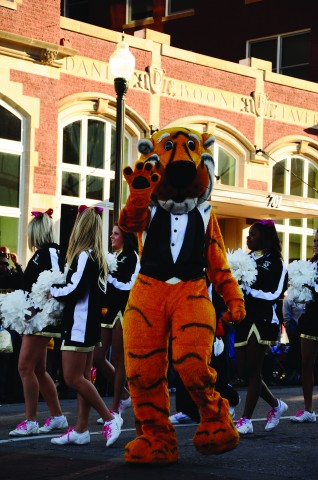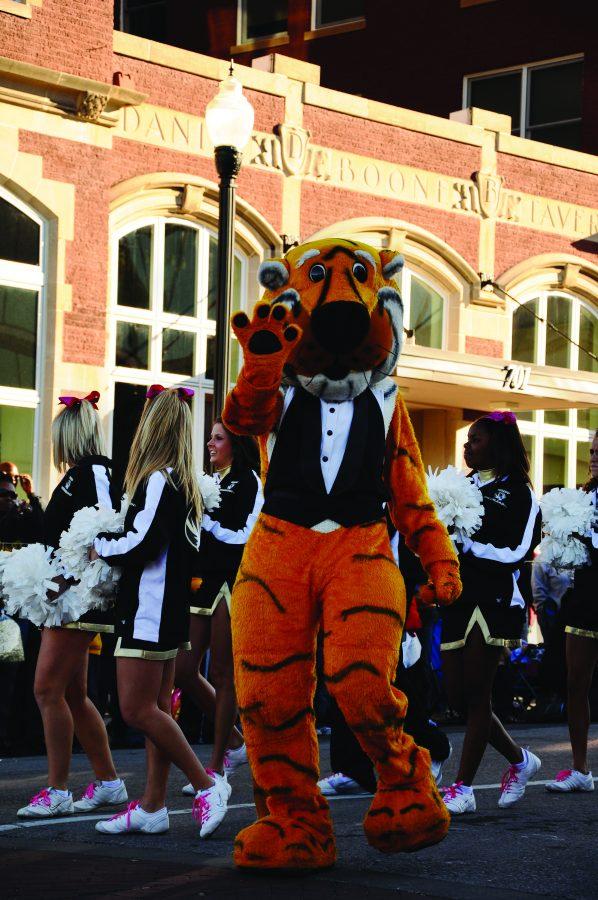
Around 9,000 fans came to the homecoming football game in 1911; 71,004 fans attended the game Saturday, Oct. 15, when Mizzou beat Iowa State 52-17, according to The Missourian. The football game was only one of many events Mizzou hosted during homecoming.
“We are bringing back old traditions and doing them in new ways, like the romp, chomp and stomp tailgate before the game kickoff,” said Carrie Bien, adviser of the homecoming steering committee for Mizzou. “In the ‘50s the Romp, Chomp and Stomp was a Friday night event that had a dinner, skits and dance, so this is kind of our new way to bring it back into the 21st century. Now it’s just a huge tailgate with thousands of people celebrating the centennial blowout.”
Other homecoming events included a talent competition, blood drive, campus decorations and parade. Senior Anna Wawrzyniak who attends the homecoming parade every year enjoyed it more than usual this year because of the special anniversary.
“My favorite part of homecoming is the parade. It seems like the entire town of Columbia was at it because it was the 100th one,” Wawrzyniak said. “I love seeing the old men in cars. They drive these really tiny go-kart type cars, but the streets are really narrow, so they almost hit each other and the people in the crowd, so it’s really funny. Everyone can enjoy it.”
Bien said all the homecoming events brought the community together. Even people who did not even attend the University of Missouri—Columbia came out to support the community.
“I think Mizzou homecoming has something for everyone and is such a family-friendly celebration that it really brings community members out to our events,” Bien said. “In addition, our service components is a huge way our community gets involved, like coming to the blood drive or donating food at a local grocery store. The combination of [the events] really bring[s] together the campus and the community.”
By Kirsten Buchanan













































































